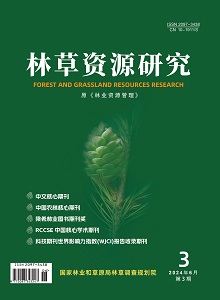Taking oak secondary forests in Xiaolongshan,Tianshui,Gansu Province as the research subject,the differences of soil organic carbon (SOC),total nitrogen (TN) and total phosphorus (TP) contents in 0-30cm soil under different management methods were compared after 8 years of management,and their distribution and stoichiometric characteristics were analyzed to provide reference for forest management in this area.In this study,using unmanaged (UC) as a control,3 management methods of close to natural forest management (CNFM: thinning of target trees),structure-based forest management (SBFM: thinning of optimized forest spatial structure) and secondary forest comprehensive silvicuture (SFCS: thinning of reduced stand density) were compared.The results showed as follows: 1) Soil SOC,TN and TP increased in SBFM,while SOIL TP increased in CNFM.Soil SOC and TN were enriched in soil surface and showed a decreasing trend.Soil TP decreased first and then increased in CNFM and SBFM,but decreased in SFCS.2) Soil C:N increased after management,while soil C:P and N:P decreased significantly in CNFM and SBFM.With the increase of soil depth,C:P and N:P showed a decreasing trend,but the law of C:N was not obvious.3) Correlation analysis showed that N dominated SOC changes and P controlled SFCS.In conclusion,managements changed the soil nutrient structure,soil SOC decomposition slowed down,the availability of P increased,and the restriction of N intensified after management.SBMF had a good effect on improving soil nutrients and increasing carbon sink,so it was suggested to adopt this management model in this area.

